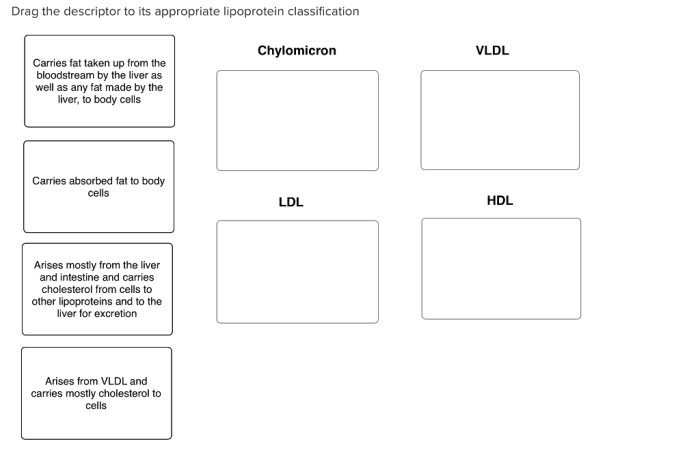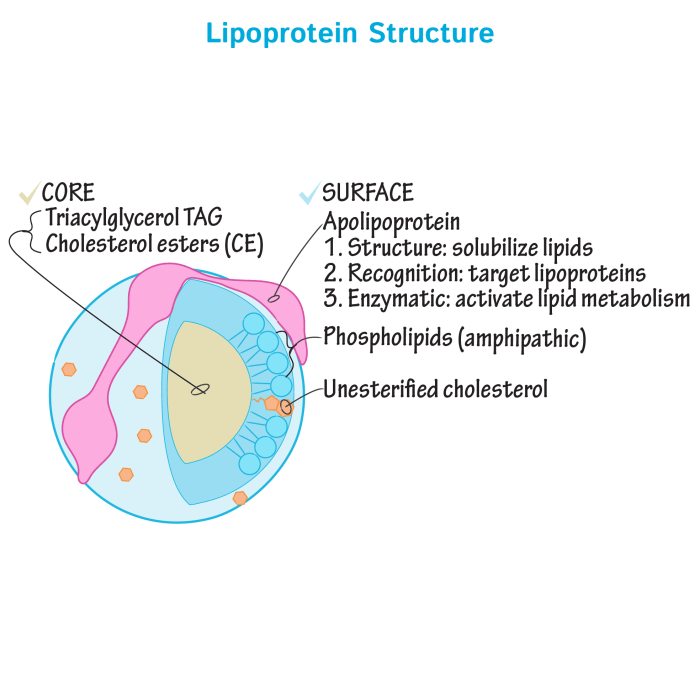Drag the descriptor to its appropriate lipoprotein classification. – Delving into the intricacies of lipoprotein classification, this exploration unveils the significance of categorizing these particles, unraveling their composition, characteristics, and impact on cardiovascular health. Embark on a journey to decipher the nuances of lipoprotein classification, unlocking the secrets of cardiovascular risk assessment.
Lipoproteins, the multifaceted transporters of lipids, play a pivotal role in lipid metabolism. Understanding their classification is crucial for comprehending their physiological functions and pathological implications.
Introduction: Drag The Descriptor To Its Appropriate Lipoprotein Classification.

Lipoproteins are macromolecular complexes that transport lipids in the bloodstream. Classifying lipoproteins is essential for understanding their roles in lipid metabolism and cardiovascular disease.
Types of Lipoproteins, Drag the descriptor to its appropriate lipoprotein classification.
- Chylomicrons:Exogenous triglycerides from the diet
- Very-low-density lipoproteins (VLDLs):Endogenous triglycerides from the liver
- Intermediate-density lipoproteins (IDLs):Remnants of VLDLs
- Low-density lipoproteins (LDLs):Cholesterol-rich particles
- High-density lipoproteins (HDLs):Cholesterol-poor particles
Lipoprotein Classification Methods
- Ultracentrifugation:Separates lipoproteins based on density
- Electrophoresis:Separates lipoproteins based on charge
- Immunoaffinity chromatography:Separates lipoproteins based on specific proteins
Factors Influencing Lipoprotein Classification
- Lipid content
- Protein content
- Size
- Density
Clinical Significance of Lipoprotein Classification
Lipoprotein classification is used to assess cardiovascular risk. High levels of LDLs and low levels of HDLs are associated with an increased risk of heart disease.
Future Directions in Lipoprotein Classification
Research is ongoing to develop new methods for classifying lipoproteins and to better understand their role in cardiovascular disease.
Q&A
What is the purpose of lipoprotein classification?
Lipoprotein classification aids in identifying and characterizing different types of lipoproteins based on their composition, size, and density. This categorization helps us understand their physiological roles and assess their potential impact on cardiovascular health.
How does lipoprotein classification help in assessing cardiovascular risk?
Lipoprotein classification provides valuable information about an individual’s lipid profile, which is a key factor in assessing cardiovascular risk. By analyzing the levels and types of lipoproteins present, healthcare professionals can determine the risk of developing cardiovascular diseases.

